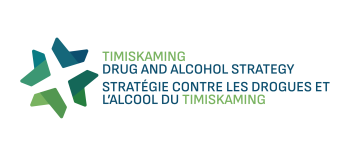Introducing the Strategy
Four priority areas emerged from the planning phase of the strategy, identifying key approaches needed to achieve the TDAS goal. The areas are grouped into pillars.
Objectives and actions have been developed within each of the four pillar groups. Action has already been taken on some of the plans below, while some are long-term initiatives.

Prevention
Preventing high-risk drug and substance use.What the TDAS hopes to achieve through prevention efforts:
- Reduce the rate of high-risk substance use across the lifespan.
- Delay the onset of potential youth substance use.
- Enhance the protective factors of high-risk substance use.
- Reduce the risk factors of high-risk substance use, including the related stigma.
How the TDAS plans to achieve those prevention objectives:
- Improve data collection, monitoring, and reporting of substance use related trends including risk and protective factors to better inform program planning.
- Identify and implement interventions (including policies and programming) to enhance protective factors and reduce or prevent risk factors across the lifespan with a focus on youth, including early intervention and relapse prevention.
- Collaborative community education campaigns on harms, protective and risk factors, stigma, and others.

Harm Reduction
Reduce the negative effects of substance use without requiring a person to quit.What the TDAS hopes to achieve through harm reduction efforts:
- Reduce stigma related to substance use and the harm reduction approach.
- Promote and provide accessible harm reduction services and supports.
- Support timely referral and access to health and social services.
How the TDAS plans to achieve those harm reduction objectives:
- Develop and implement an anti-stigma communications campaign targeting health, harm reduction and other service providers.
- Adopt and implement a communications campaign related to stigma which targets the general population.
- Increase the number of harm reduction service sites.
- Build capacity to support a sublocade program.
- Learn about the local application of a safe consumption site.
- Increase the number of safe disposal sites for used substance use equipment and paraphernalia.
- Provide ongoing updates and learning to and from the network of local harm reduction service providers.
- Review and improve the current quality of data collection and reporting.
- Identify referral pathways for substance use related services and for community resources and other supports such as housing, health care, social assistance, nutrition, mental health, and family support.
- Enhance group program offerings such as peer support.
- Engage with emergency departments and emergency response services to better

Treatment
Support innovative approaches to treatment and recovery.What the TDAS hopes to achieve through treatment efforts:
- Promote and provide accessible and equitable treatment services and supports.
- Increase the understanding and use of trauma informed approach, integrating mental health promotion and care.
- Reduce stigma related to substance-use treatment.
How the TDAS plans to achieve those treatment objectives:
- Establish and promote educational opportunities for prescribers of treatment medicine.
- Advocate for and explore feasibility of implementing detox beds, day/evening treatment, residential treatment, safe beds, and aftercare.
- Increase Rapid Access Addiction Medicine clinic capacity .
- Explore feasibility of recovery/addictions housing .
- Continue to identify and remove barriers to treatment services and supports, such as decreased wait times.
- Develop and strengthen care pathways for substance use and addiction treatment including discharge planning processes.
- Identify referral pathways for substance use related services .
- Review and improve the current quality of data collection and reporting.
- Facilitate training for taking a trauma informed approach among care providers.
- Ensure services and supports are mental health promoting and linked to mental health treatment as needed.

Community Safety
Reduce criminal activity and community safety issues associated with substance use while developing trusting relationships with all community members.What the TDAS hopes to achieve through community safety efforts:
- Develop and strengthen the coordinated approach between enforcement and health and social services.
- Reduce and prevent trafficking of illicit substances.
- Develop and strengthen community safety measures.
How the TDAS plans to achieve those community safety objectives:
- Establish effective and timely pathways to support community members with substance-related issues to safely transition from, or divert from, the justice system
- Assess the need for increased capacity of the Community Street Crime Unit (CSCU) and identify opportunities for additional support
- Continue to work collaboratively with specialists to support enforcement in drug trafficking investigations (i.e., crime stoppers)
- Learn about local application of decriminalization of substances and remain informed by provincial and federal policy
- Continue to enforce and promote existing policies to increase community awareness, such as: Smoke-Free Ontario Act, Good Samaritan Drug Overdose Act
- Continue to monitor, share, and report local criminal charges associated with substance use to inform policy and program decisions
- Remain informed and learn about the local application of promising practices to strengthen relationships with community members and protect vulnerable populations
- Address substance use safety measures in schools through identified smoking areas and education campaigns
- Assess and monitor road safety related to substance use and implement protective measures


Moving Forward
Implementation of this Strategy is a shared responsibility of all TDAS members. Effecting change to prevent and reduce the harms associated with substance use and improve the quality of life of all community members requires collective action and leadership to be taken. As next steps are taken to advance the details of this document, the TDAS will convene and bring together key participants.
This document represents our best knowledge and learning at this time. As data collection, evidence-informed practices, and the local context shifts, so too will our approach. The TDAS will continue to monitor and evaluate our progress and keep the community and invested parties updated on our work.

